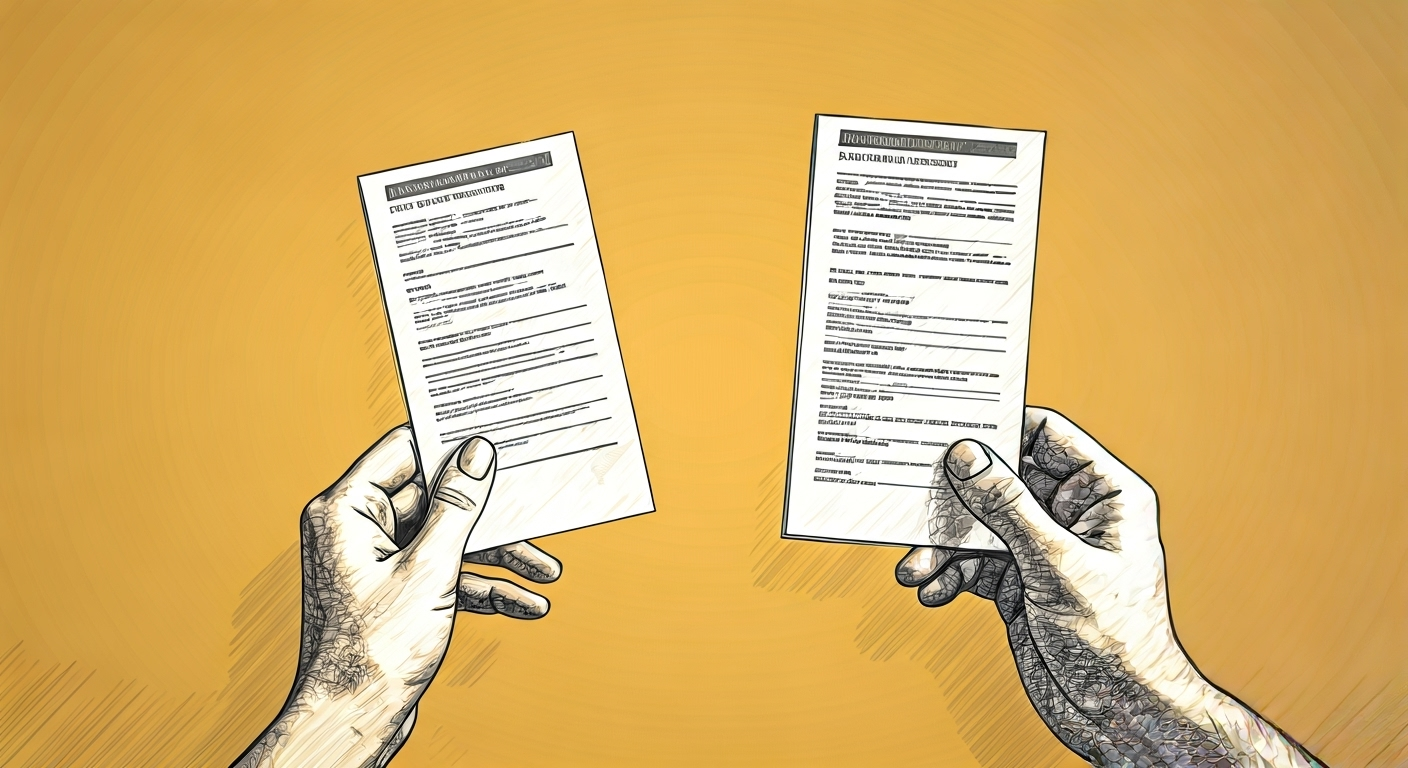
Key Highlights
- Term life insurance provides affordable coverage for a fixed period, typically ranging from 10 to 30 years.
- Key factors affecting the cost of term life insurance include age, health status, gender, lifestyle, and occupation.
- Coverage amounts and policy length significantly influence your premium payments; larger coverage amounts and longer terms lead to higher costs.
- Comparison with whole and universal life insurance reveals term life insurance is often the cheaper option but lacks permanent coverage and cash value.
- Making healthy lifestyle choices and shopping around can help lower your life insurance premiums effectively.
- Understanding your coverage needs and comparing quotes ensures you choose the best term life insurance policy for your family.
Introduction
Term life insurance is a simple and easy way to help keep your loved ones safe with money if something happens to you. When you pick a term life policy, you get lower costs than many other choices in life insurance. But you might be thinking, what can make the cost of term life insurance go up or down? Age, medical history, and the way you live your life can change how much you need to pay. The good thing is, learning about term life insurance premiums is not hard. This guide is here to help you learn about the cost of term life insurance. It will help you know what things affect term life insurance premiums. That way, you can make better choices that are right for you and your family.
Key Factors Influencing Term Life Insurance Cost in the United States

Term life insurance costs can be different for many people. Companies look at your age, health, the job you have, and how you live to set your price. Young people often get lower rates. People with health problems, like heart disease or high blood pressure, or who work risky jobs, usually pay higher premiums. The company may also ask for a medical exam. This test checks for health issues that can make the cost of insurance go up.
When you know what affects your rates, you can guess how much money you will need to pay. You can use this information to try and make your term life policy more affordable. For example, you could apply for term life insurance when you are younger, or you could work on health risks you can change.
Age and Health Status
Your age is important when it comes to your term life premium. Younger people often get lower rates. They are viewed as a lower risk and are likely to live longer. For example, a healthy 20-year-old can get coverage for less than a 50-year-old. So, applying when you are young can save you a lot of money.
Your health status also matters a lot. Insurers will look at your medical history. They check for health issues like high blood pressure and heart disease. If a medical exam shows you have a chronic problem, your premium will likely be higher due to the health risk.
A family history with problems like cancer or diabetes is also a factor. Insurers ask about hereditary health issues to see what your risk level is. If you share your past medical records honestly, you will get an accurate premium rate. Managing your health well can lower the cost of term life insurance over time.
Gender, Occupation, and Lifestyle Habits
Gender affects what you pay for insurance. Women usually have to pay less because they tend to live longer than men. The price difference is not very big at one time, but over the years, it can add up.
The work you do is also important. The insurance company looks at your job to see if it is safe or not. If you are a police officer or work as a construction worker, you may have to pay higher rates. This is because jobs like these are seen as risky. If you do dangerous things like skydiving, your insurance company will notice, and your premiums can go up.
The way you live your life matters, too. If you smoke, drink, or use tobacco products, the rates you pay for insurance will be much higher. Insurance companies see these habits as putting you at greater risk. So they want to cover possible costs if something happens to you. To keep your insurance rates lower, you need to stay away from risky choices and practice healthy habits. This will show the insurance company that you are not a high-risk person and you can get more affordable rates.
How Coverage Amount and Policy Length Affect Your Premiums

The coverage amount you pick has a big effect on your premium payments. If you choose a larger term life policy, like $1,000,000, you will pay higher premiums. This is because there is more risk for the provider compared to a smaller $100,000 policy. Also, if you go for a longer term life policy, such as 30 years, you will have to pay higher premiums than if you choose a shorter policy.
It is important to balance the amount of coverage and how long your policy lasts with your budget. You also need to look at your family’s financial needs. This helps you not spend too much, but you can still pay for things like a house loan or college costs in the future.
Navigating Coverage Amounts: $100,000 vs. $1,000,000 Policies
Choosing between $100,000 and $1,000,000 for your coverage amount can be tough. The plans with a smaller face amount come with lower costs. But, these may not be enough for your long-term coverage needs. If you choose a bigger face amount, the death benefit is higher, but you will have to pay more each month.
Below you will see a table that shows how picking different coverage amounts can change the average cost each month for a healthy 40-year-old:
| Coverage Amount | Average Monthly Rate for Male | Average Monthly Rate for Female |
|---|---|---|
| $100,000 | $11.25 | $10.50 |
| $250,000 | $28.92 | $17.84 |
| $1,000,000 | $83.00 | $63.00 |
Knowing these numbers can help you know what you will get and how much you will pay so you can pick what works best for you and your family’s coverage needs. This aids you in finding the best face amount for your budget and what you need right now.
Impact of Term Length: 10, 20, or 30 Years?
The length of the term life policy you choose has a big effect on how much you pay. When you get a shorter term, like a 10-year plan, you pay less. This is because there is a lower chance the life insurance company has to pay out during that time. If you go for a 20- or 30-year term, you get more safety, but your premium payments will be higher.
Let’s say a healthy 40-year-old man wants term life insurance for $500,000. If he wants it for 10 years, he pays about $203 every year. If he goes with a 20-year term life policy, his cost goes up to $333 each year. For 30 years, the yearly cost jumps to $579 because the insurance company is taking on more risk.
When picking how long your term life policy should last, think about what you need for money and for coverage. If you just need final expense insurance, or need coverage for a short time, pick a shorter length. But if you want to replace your income for your family over a long time, you will need a policy that lasts longer. Make sure the coverage needs fit what is best for you.
Comparing Term Life Insurance to Other Types of Life Insurance
Term life insurance is different from whole life and universal policies because it is simple, low-cost, and gives fixed coverage. With term life insurance, you get coverage for only a set period of time. Whole life insurance and universal life insurance have a cash value part, but term life does not.
Whole life insurance and universal life protect you for the rest of your life. They come with higher premiums, so not everyone can afford them. Some people mix term life and permanent coverage to lower costs and still meet their coverage needs. You should think about your own priorities to find the type of policy that is right for you.
Term Life vs. Whole Life Insurance Costs
The cost difference between term life and whole life insurance is big. Term life insurance has lower premiums. It covers you for a set time and does not give you any cash value. This type is good for people who care about staying on budget. For example, a healthy 30-year-old man might pay only $221 a year for a term life policy with $500,000 coverage. That same person would pay about $4,311 for a whole life policy with the same coverage amount.
Whole life insurance comes with a cash value component. This means you can borrow or take money from it later, but this makes the premiums higher. Whole life insurance also gives you lifetime coverage. It works well for those who want long-term security.
In the end, term life insurance offers lower premiums and saves you money, while whole life insurance gives you coverage for life and a cash value, but it costs more. Think about your current needs and financial goals before picking the right life insurance for you.
Term Life vs. Universal Life: Which Is More Affordable?
When you look at term life and universal life, cost is a big factor. Term life usually has lower prices because it only pays out if you die during the policy time. For example, a $1,000,000 term life insurance plan may be as low as $83 each month for a 40-year-old man.
Universal life insurance costs more. It covers you for life and has a cash value that can grow over time. You can also change your premium payments and your death benefit if your money needs change. But, because its cash value is tied to the stock market, this type of life insurance is less steady, so you might not know exactly what you’ll get.
If you want to save money, term life is the best choice. If you want life insurance that lasts forever and has more options with your payments, universal life may work for you, but you have to pay more for it.
Tips to Lower Your Term Life Insurance Rates
Lowering the cost of your term life insurance is possible when you make some smart changes. When you live a healthy life, like quitting smoking or taking care of ongoing health issues, you can lower insurance rates by a lot. Also, keeping a good credit score helps because insurance companies may offer lower premiums if your score is strong.
When you compare quotes by using a life insurance calculator, you can find the best life insurance for you. Try these steps so you can lower what you pay each month while still getting good term life coverage for your family.
Healthy Living and Its Impact on Premiums
Healthy living can help you get lower term life insurance premiums. When you make small, good changes, you show the insurance company you are less likely to have health issues. This means you might get cheaper rates for your life insurance. Here is how you can do this:
- Quit smoking: Using tobacco products makes your premiums higher. If you stop smoking, you can cut costs in a big way.
- Maintain a healthy weight: If you have extra weight, your risk for health issues, like heart disease, is higher. By managing your weight, you can make your life insurance profile better.
- Regular check-ups: Going to medical exams helps you know and manage your health.
- Exercise and balanced diet: If you stay active and eat well, you can help stop chronic health conditions. This will also help lower risk factors over time.
By making these changes, you set yourself up for lower premiums and a better, healthier future.
Shopping Around: The Importance of Comparing Quotes
Comparing insurance rates is a key step when you want to get affordable life insurance. When you use a life insurance calculator, it helps make the process easier. You can get quotes that fit your needs and profile.
For example, a healthy man who is 40 years old and wants $500,000 of life insurance may see rates from $334 to $414 each year at different companies. It is smart to look at different choices, especially if you want a plan that does not ask for a medical exam. Some companies give both auto insurance rates and life insurance quotes, so checking those can help too.
You should pick the best life insurance policy by checking every option. Think about your budget and coverage needs so you get what works well for you.
Conclusion
Knowing the cost of term life insurance is important when you make choices for you and your family’s money. When you think about things like your age, health, and the way you live, it can help you know more about what you will pay for term life insurance. This way, you can pick the life insurance that works best for you. It is also good to look at how term life compares to other types, like whole and universal life insurance. Doing this helps you find the most affordable and right plan for you. Living healthy and looking at offers from different companies can help lower your cost of term life insurance. If you want to learn more about your choices, you can talk with our experts for free today!
Frequently Asked Questions
What is the average cost of term life insurance in the US?
The cost of term life insurance is about $26 each month. This is for a healthy person who is 40 years old and wants a $500,000 policy that lasts for 20 years. The price you pay can go up or down. It depends on things like your health, if you are a man or woman, and the amount of coverage you pick with your life insurance company. The cost of term life insurance is different for every person, so it helps to talk to your insurance company to see what the cost will be for you.
Can I get term life insurance with pre-existing health conditions?
Yes, you can get term life insurance even if you have health issues. The company will look at your medical history, and in some cases, they may ask you to take a medical exam. Because of health concerns, the premiums might be higher. Even so, insurers give you term life options made for people with different medical histories.
How does smoking affect my term life insurance premiums?
Smoking can make your term life insurance premiums much higher. The use of tobacco products is tied to risk factors like heart disease and cancer. Because of this, insurers look at smokers as a bigger risk. This makes life insurance premiums go up. If you want to lower your term life insurance premiums in the future, take regular medical exams and try to quit smoking.
Is it better to buy term life insurance when I am younger?
Yes, younger people can get lower premiums because they are usually in better health and may live longer. When you buy a term life policy early, you lock in the current insurance rates. This makes your coverage cost less over time than if you wait and apply later in life.
How much term life coverage do most families need?
Families usually need life insurance to help pay for debts, lost income, and funeral costs. Most people look for coverage needs between $250,000 and $1,000,000. This can change based on your family’s face amount needs, the type of policy you pick, and what you want as death benefits.

